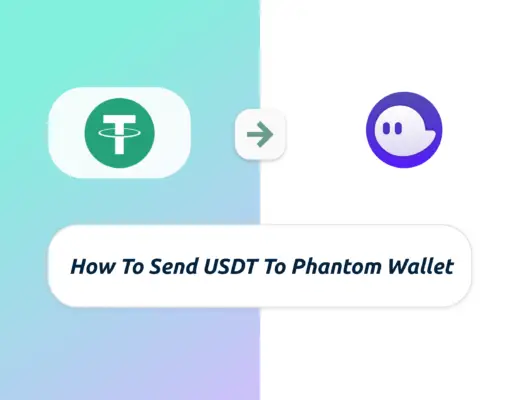If you are looking to start investing in the Singapore market or are interested in the Southeast Asian market as a whole, you may have come across the Straits Times Index (STI).
Looking for reasons to invest in the STI or doubting if it is worth it to invest in? You’ve come to the right place!
Here’s what you need to know to help you in your decision:
What is the STI?
The Straits Times Index (STI) is an index that tracks the performance of the top 30 companies listed on the Singapore Exchange (SGX). As such, it can be used to represent the overall economy of Singapore and its biggest listed companies.
Pros of the STI
Here are some reasons why you can consider investing in the STI:
#1 Accessibility
The STI ETF is one of the cheapest in Singapore where you can get exposure to 30 different companies with a relatively small investment.
At just a price of over $30 SGD (share price of $3SGD and lots of 10), you will be able to get a piece of these 30 companies that are important components of the Singapore economy.
The minimum lot size for SGX stocks is 100, while for ETFs it can range from 5 – 100.
The STI also has 2 funds that track it, the SPDR STI ETF (ES3) and the Nikko AM STI ETF (G3B). Here is a full comparison between these two funds.
You can buy the STI ETF with a broker
If you own a Singapore bank account, it is very accessible to purchase shares on the SGX as you do not need to go through the hurdles of purchasing in foreign markets.
For instance, if you want to buy US stocks, you will need the W8BEN form, which may take up to weeks for the banks to clear for you.
Furthermore, being denominated in SGD on SGX, you will be able to save on currency conversion costs when investing in the STI as well.
You can either purchase them with your traditional CDP account on the SGX or any stockbroker that has access to the SGX, such as Tiger Broker or Moomoo.
You can also buy the STI ETF with a regular saving plan (RSP)
The STI can also be bought through regular savings plans offered by local banks. Most of these plans allow you to invest as little as $100 a month into ETFs like the STI. Here is a list of the more popular regular savings plans as well as their transaction fees.
| Regular Savings Plan | Transaction fees |
|---|---|
| DBS Invest-Saver | 0.5% – 0.82% |
| OCBC Blue Chip Investment Plan | 0.88% if <30 years old, if not 0.3% |
| POEMS Share Builders Plan | $6 (up to 2 counters) Or $10 (3 or more counters) |
You can view a comparison of robo-advisors and regular savings plans to see which is a more suitable investment for you.
#2 Diversification
Here are the top 5 sectors that the STI is holding as well as their weightage.
| Industry | Weightage (%) |
|---|---|
| Financials | 46.4% |
| Real estate | 22.7% |
| Industrials | 9.5% |
| Telecommunications | 6.4% |
| Consumer discretionary | 6.3% |
As the STI is a diversified index, it has its holdings spread across different companies in different sectors and industries. This will reduce risk in your investment portfolio by not having all of its holdings in just a few companies.
For example, with an ETF like STI, your investments are spread across different industries. This means your funds won’t go down as quickly if one of these sectors experiences a downturn.
Cons of the STI
On the other hand, here are some reasons as to why you might not want to invest in the STI:
#1 The eturns are low compared to other indices
The STI does not perform very well. It has not hit its all-time high ever since 2008 and tends to trade sideways, making its year-over-year returns not consistent.
More often than not, buying the STI does not guarantee profits, even after holding for the long term.
However, you may want to take note that the STI is a local index with far less focus on international markets.
#2 The STI’s diversification is far from perfect
Despite the STI having some diversification, it is currently too focused on financials. The STI has a whopping 46.4% of its weightage in the financial sector.
| Stock | Allocation (%) |
|---|---|
| DBS Group Holding Ltd | 18.56% |
| Oversea-Chinese Banking Corporation Limited | 13.73% |
| United Overseas Bank Ltd. (Singapore) | 11.31% |
| Singapore Telecommunications Limited | 6.37% |
| Jardine Matheson Holdings Limited | 4.90% |
Furthermore, what is even more surprising is that the top 3 out of all the 30 listed companies in the Singapore Exchange encompass that 46.4% in the financial sector.
This could pose a huge risk to your portfolio in the event Singapore’s financial sector or any of the big 3 banks collapse. The overexposure to the financial sector will cause a huge hit to the STI and your investment!
With financials being a rather mature industry, it is a bit concerning to see the STI having such a large proportion of its weightage in it.
A mature industry is one that has passed both the emerging and growth phases of industry growth. Companies in these industries tend to be larger, older, and more stable.
Investopedia
So what is wrong with the STI having a large proportion of its weightage in mature industries?
- Even though it is more stable, the lack of innovation and chance to grow would mean that your investment would be more stagnant
- Any change to the financial industry as a whole would affect your portfolio greatly.
- Events that might cause people to stop borrowing or spending money such as recessions will pull your investments down
Alternatives
Instead of investing in the STI, here are some alternatives that you can consider instead:
#1 Buying into STI’s more popular holdings
If you want to invest in Singapore with better returns, you can consider buying into some of the STI’s more popular holdings.
Here are the top 3 holdings from the STI and their charts.
| Stock | SGX Ticker |
|---|---|
| DBS Group Holding Ltd | D05.SI |
| Oversea-Chinese Banking | O39.SI |
| United Overseas Bank Ltd. (Singapore) | U11.SI |
REITs have been popular with retail investors as well, with many liking their dividends on top of their growth potential. Here are some of the popular REITs that are available on the SGX that provide good returns:
| Stock Name | SGX Ticker |
|---|---|
| Ascendas REIT | A17U |
| Mapletree Commercial Trust | N2IU |
| Mapletree Industrial Trust | ME8U |
#2 Investing in indices outside of Singapore
If you want to invest in an index that provides better returns, it may be better to look at indices outside of Singapore. This is because these indices are usually more diversified with much more holdings too.
Here are some of them you can take a look at:
- S&P 500 (Here’s a comparison between the STI and the S&P 500)
- FTSE 100
- MSCI World Index
- MSCI Emerging Markets Index
Conclusion
Overall, the STI does not have good diversification. It is heavily weighed in the financial and real estate sector, but you can choose to buy into the STI if you believe these industries will flourish in the future.
Its returns may be lower compared to other indices but the STI can also be argued to be a “safer” ETF due to it being limited to Singapore. With most of the companies listed based only in Singapore, any volatile collapse of the global economy will not affect the STI as much.
This will keep your investment insulated from global fluctuations.
To add to this, the STI contains many companies that you are familiar with if you live in Singapore such as:
- Your local banks (DBS/OCBC/UOB)
- The malls you go to every day (Capitaland/ Acendas)
- The airlines you take to travel (Singapore Airlines)
All in all, the STI may not be the ideal index to invest in due to its shortcomings in its diversification and returns. However, due to its accessibility, it is still a decent choice if you are a beginner investor who may be unfamiliar with investing in foreign stocks.

Do you like the content on this blog?
To receive the latest updates, you can follow us on our Telegram channels (Personal Finance or Crypto) and Facebook.
Are you passionate about personal finance and want to earn some flexible income?





